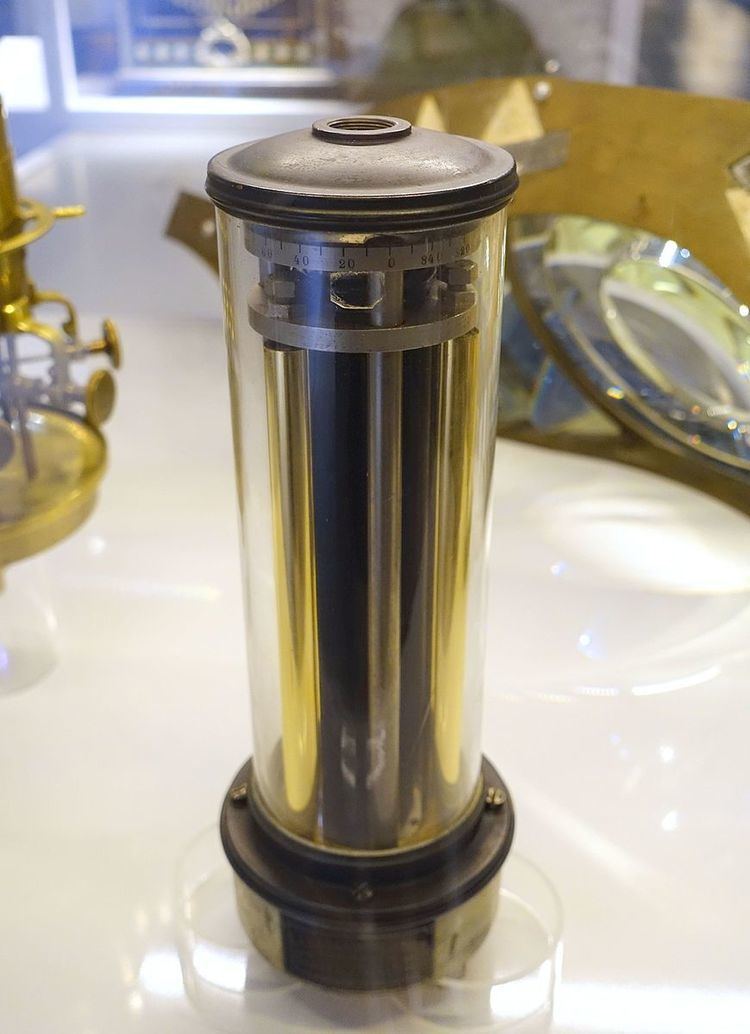 | ||
A sun valve (Swedish: solventil, "solar valve") is a form of flow control valve, notable because it earned its inventor Gustaf Dalén the 1912 Nobel Prize in Physics.
Contents
The valve formed part of the Dalén light which was used in lighthouses from the 1900s through to the 1960s by which time electric lighting came to dominate.
Many prominent contemporary engineers, including Thomas Edison, initially doubted that the device could work. The patent office demanded a special demonstration before approving the patent application.
Design
The valve is controlled by four metal rods enclosed in a glass tube. The central rod that is blackened is surrounded by the three polished rods. As sunlight falls onto all of the rods, the absorbed heat of the sun allows the unequally expanding dark rod to cut the gas supply. After sunset, the central rod cools down, becoming the same length as the polished rods and opening the gas supply. The gas is lit by the small, always-burning pilot light.
Currently operating lighthouses
An example of the valve may still be seen in operation (as of October 2012) at the lighthouse at Chumbe Island off Zanzibar. This lighthouse was constructed in 1904 and has been running on an acetylene gas system since 1926, with an automatic sun valve that turns the light on at night.
